Measuring the effect of social media on student academic performance using a social media influence factor model
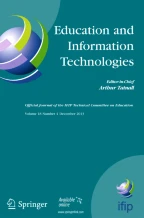
With the advent of smartphones and fourth generation mobile technologies, the effect of social media on society has stirred up some debate and researchers across various disciplines have drawn different conclusions. Social media provides university students with a convenient platform to create and share educational content. However, social media may have an addicting effect that may lead to poor health, poor concentration in class, poor time management and consequently poor academic performance. Using a random sample of 623 students from the University of Professional Studies Accra, Ghana, this paper presents a social media influence factor (SMIF) model for measuring the effect of social media on student academic performance. The proposed model is examined using linear regression analysis and the results show a statistically significant negative relationship between SMIF variables and student grade point average (GPA). The model accounted for 30.7% of the variability in student GPA and it demonstrated a prediction quality of 55.4% given the data collected.
This is a preview of subscription content, log in via an institution to check access.
Access this article
Subscribe and save
Springer+ Basic
€32.70 /Month
- Get 10 units per month
- Download Article/Chapter or eBook
- 1 Unit = 1 Article or 1 Chapter
- Cancel anytime
Buy Now
Price includes VAT (France)
Instant access to the full article PDF.
Rent this article via DeepDyve
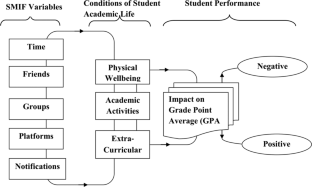
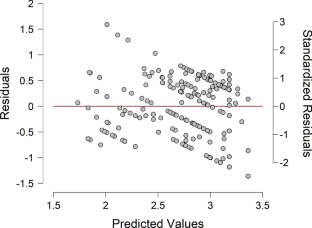
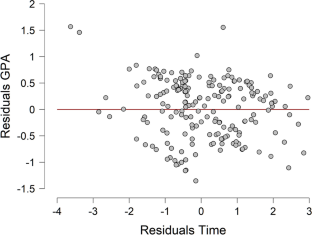
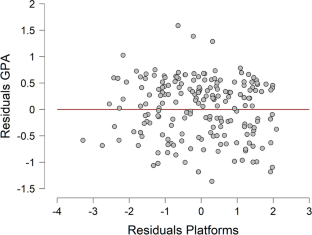
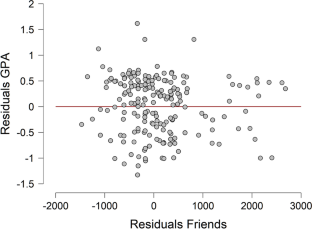
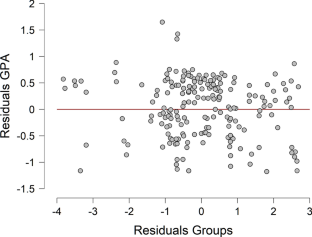
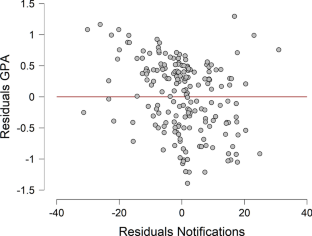
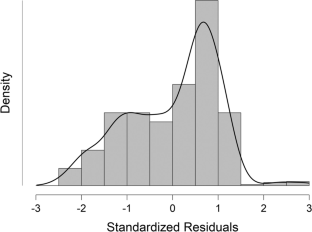

Similar content being viewed by others

Use of Social Media in Student Learning and Its Effect on Academic Performance
Chapter © 2021

Social Media Impact on Academic Performance: Lessons Learned from Cameroon
Chapter © 2020

Social Media: People’s Salvation or Their Perdition?
Chapter © 2020
Explore related subjects
Data availability
The datasets generated during and analyzed during the study are available in figshare repository https://doi.org/10.6084/m9.figshare.14905089.v1
Notes
References
- Abbas, J., Jaffar, A., Mohammad, N., & Shaher, B. (2019). The impact of social media on learning behavior for sustainable education: Evidence of students from selected Universities in Pakistan. Sustainability,11(6), 1683. https://doi.org/10.3390/su11061683ArticleGoogle Scholar
- Addei, C., & Kokroko, E. (2020). The Effect of Social Media Use on the Written English of University Students: The case of University of Mines and Technology (UMaT). 6th UMaTBIC, Ghana.Retrieved from http://conference.umat.edu.gh/wp-content/uploads/2020/08/The-Effect-of-Social-Media-Use-on-the-Written-English-of-University-Students.pdf
- Al-Menayes, J. (2015). Social Media use, engagement and addiction as predictors of academic performance. International Journal of Psychological Studies.,7, 86. https://doi.org/10.5539/ijps.v7n4p86ArticleGoogle Scholar
- Alwagait, E., Shahzad, B., & Alim, S. (2015). Impact of social media usage on students academic performance in Saudi Arabia. Computers in Human Behavior,51, 1092–1097. ArticleGoogle Scholar
- Ansari, J. A. N., & Khan, N. A. (2020). Exploring the role of social media in collaborative learning the new domain of learning. Smart Learning Environments,7, 9. https://doi.org/10.1186/s40561-020-00118-7ArticleGoogle Scholar
- Asare-Donkoh, F. (2018). Impact of social media on Ghanaian High School students. Library Philosophy and Practice (ejournal), 1914. Retrieved from http://digitalcommons.unl.edu/libphilprac/1914
- Azizi, S. M., Soroush, A., & Khatony, A. (2019). The relationship between social networking addiction and academic performance in Iranian students of medical sciences: A cross-sectional study. BMC Psychol,7, 28. https://doi.org/10.1186/s40359-019-0305-0ArticleGoogle Scholar
- Barry, C. T., & Wong, M. Y. (2020). Fear of missing out (FoMO): A generational phenomenon or an individual difference? Journal of Social and Personal Relationships.,37(12), 2952–2966. https://doi.org/10.1177/0265407520945394ArticleGoogle Scholar
- Berryman, C., Ferguson, C. J., & Negy, C. (2018). Social media use and mental health among young adults. Psychiatric Quarterly,89, 307–314. https://doi.org/10.1007/s11126-017-9535-6ArticleGoogle Scholar
- Boté-Vericad, J. (2021). Challenges for the educational system during lockdowns: A possible new framework for teaching and learning for the near future. Education for Information,37(1), 149–153. https://doi.org/10.3233/EFI-200008ArticleGoogle Scholar
- Brown, L., & Kuss, D. J. (2020). Fear of missing out, mental wellbeing, and social connectedness: A seven-day social media abstinence trial. International Journal of Environmental Research and Public Health,17(12), 4566. https://doi.org/10.3390/ijerph17124566ArticleGoogle Scholar
- Franchina, V., Vanden Abeele, M., van Rooij, A. J., Lo Coco, G., & De Marez, L. (2018). Fear of missing out as a predictor of problematic social media use and phubbing behavior among flemish adolescents. International Journal of Environmental Research and Public Health,15(10), 2319. https://doi.org/10.3390/ijerph15102319ArticleGoogle Scholar
- Gall, C., Gall, I., & Jalali, A. (2020). Social media usage among university students during exams: Distraction or academic support. Education in Medicine Journal,12, 49–53. https://doi.org/10.21315/eimj2020.12.3.6ArticleGoogle Scholar
- Global Web Index. (2021). Social media marketing trends in 2021. GWI. Retrieved from https://www.globalwebindex.com/reports/social
- Hamat, A., Embi, M., & Hassan, H. (2012). The Use of Social Networking Sites among Malaysian University Students. International Education Studies. 5. https://doi.org/10.5539/ies.v5n3p56
- Hayran, C., Anik L., & Gürhan-Canli, Z. (2020). A threat to loyalty: Fear of missing out (FOMO) leads to reluctance to repeat current experiences. PLoS One,15(4). https://doi.org/10.1371/journal.pone.0232318
- Karim, F., Oyewande, A. A., Abdalla, L. F., Chaudhry Ehsanullah, R., & Khan, S. (2020). Social media use and its connection to mental health: A systematic review. Cureus,12(6), e8627. https://doi.org/10.7759/cureus.8627ArticleGoogle Scholar
- Kim, B., & Kim, Y. (2017). College students’ social media use and communication network heterogeneity: Implications for social capital and subjective well-being. Computers in Human Behavior,73, 620–628. https://doi.org/10.1016/j.chb.2017.03.033ArticleGoogle Scholar
- Kiran, R. D. (2016). Total Quality Management: Key Concepts and Case Studies (1st ed.). Butterworth-Heinemann.
- Koeske, Gary F. & Koeske, Randi Daimon. (1993). A Preliminary Test of a Stress-Strain-Outcome Model for Reconceptualizing the Burnout Phenomenon. Journal of Social Service Research,17(3–4), 107–135. https://doi.org/10.1300/J079v17n03_06ArticleGoogle Scholar
- Kolan, B. J., & Dzandza, P. E. (2018). Effect of social media on academic performance of students in Ghanaian Universities: A case study of university of Ghana, Legon. Library Philosophy and Practice (e-journal), 1637. Retrieved from https://digitalcommons.unl.edu/libphilprac/1637
- Lau, W. (2017). Effects of social media usage and social media multitasking on the academic performance of university students. Computers in Human Behavior.,68, 286–291. https://doi.org/10.1016/j.chb.2016.11.043ArticleGoogle Scholar
- Lee, Y., & Song, J. (2021). Robustness of model averaging methods for the violation of standard linear regression assumptions. Communications for Statistical Applications and Methods,28(2), 189–204. https://doi.org/10.29220/CSAM.2021.28.2.189ArticleGoogle Scholar
- Mancini, M. (2003). Time Management. Canberra: McGraw-Hill Professional. Google Scholar
- Manjur, K., Raisa, N. A. K., & Abdalla, A. (2021). Effect of social media use on learning, social interactions, and sleep duration among university students. Saudi Journal of Biological Sciences. Elsevier B.V.
- Martínez-Cardama, S., & Caridad-Sebastián, M. (2019). Social media and new visual literacies: Proposal based on an innovative teaching project. Education for Information,35(3), 337–352. https://doi.org/10.3233/EFI-180214ArticleGoogle Scholar
- Mingle, J., & Adams, M. (2015). Social media network participation and academic performance in senior high schools in Ghana. Library Philosophy and Practice (e-journal). Paper 1286. Retrieved from http://digitalcommons.unl.edu/libphilprac/1286
- Moreno-Guerrero, A., Rodríguez, C., Navas-Parejo, M., Costa, R., & López-Belmonte, J. (2020). (2020). WhatsApp and google drive influence on pre-service students’ learning. Frontiers in Education, 5. https://doi.org/10.3389/feduc.2020.00152
- Owusu-Acheaw, M., & Larson, A.G. (2015). Reading habits among students and its effect on academic performance: A study of students of koforidua polytechnic. Journal of Education and Practice, 6(6). Retrieved from https://files.eric.ed.gov/fulltext/EJ1083595.pdf
- Priya, V. K., Thirumagal, P., & Madhumita, G. (2020). Social media effect on students academic performance based on their usage. International Journal of Scientific & Technology Research.,8, 2715. Google Scholar
- Ra, C., Cho, J., Stone, M., Cerda, J., Goldenson, N., Moroney, E., Tung, I., Lee, S., & Leventhal, A. (2018). Association of digital media use with subsequent symptoms of attention-deficit/hyperactivity disorder among adolescents. JAMA Journal of the American Medical Association,320, 255–263. https://doi.org/10.1001/jama.2018.8931ArticleGoogle Scholar
- Sankar, V., & Pushpa, B. (2020). Impact of social media on academic performance of university students-a field survey of academic development. TechnoLearn an International Journal of Educational Technology, 10(1&2). https://doi.org/10.30954/2231-4105.02.2020.1
- Sela, Y., Zach, M., Amichay-Hamburger, Y., Mishali, M., & Omer, Haim. (2019). Family environment and problematic internet use among adolescents: The mediating roles of depression and fear of missing out. Computers in Human Behavior, 106. https://doi.org/10.1016/j.chb.2019.106226
- Shakya, H. B., & Christakis, N. A. (2017). Association of Facebook use with compromised well-being: A longitudinal study. American Journal of Epidemiology, 185(3). https://doi.org/10.1093/aje/kww189
- Shi, C., Yu, L., Wang, N., Cheng, B., & Cao, X. (2020). Effects of social media overload on academic performance: A stressor-strain-outcome perspective. Asian Journal of Communication,30(2), 179–197. ArticleGoogle Scholar
- Simon, K. (2021a). Digital 2021a: Global Overview Report. Datareportal. Retrieved from https://www.slideshare.net/DataReportal/digital-2021-global-overview-report-january-2021-v03?ref=https://datareportal.com/.
- Simon, K. (2021b). Digital 2021b report for Ghana. Datareportal. Retrieved fromhttps://www.slideshare.net/DataReportal/digital-2021-ghana-january-2021-v01?qid=bb2421dd-a89a-41c5-a8b9-18c3571cf67f&v=&b=&from_search=1
- Songxaba, S. L., & Sincuba, L. (2019). The effect of social media on English second language essay writing with special reference to WhatsApp. Reading & Writing - Journal of the Reading Association of South Africa,10(1), a179. https://doi.org/10.4102/rw.v10i1.1799ArticleGoogle Scholar
- Twenge, J. M., & Campbell, W. K. (2019). Media use is linked to lower psychological well-being: Evidence from three datasets. Psychiatric Quarterly,90, 311–331. https://doi.org/10.1007/s11126-019-09630-7ArticleGoogle Scholar
- Vannucci, A., Flannery, K. M., & Ohannessian, C. M. C. (2017). Social media use and anxiety in emerging adults. Journal of Affective Disorders,207, 163–166. https://doi.org/10.1016/j.jad.2016.08.040ArticleGoogle Scholar
- Washington, S., Karlaftis, M., Mannering, F., & Anastasopoulos, P. (2020). Violations of Regression Assumptions. https://doi.org/10.1201/9780429244018-6
- Wright, J. (2002). Time management: The pickle jar theory. A List Apart, 146, 1–5. Retrieved from file file:///C:/Users/JEFF/Downloads/Time-Management-The-Pickle-Jar-Theory.pdf.
Acknowledgements
We wish to thank the respondents who took the time to respond to this survey and the University of Professional Studies Accra, Ghana
Funding
This research was conducted using the researchers’ annual research allowance which is funding given by the Government of Ghana to all academic staffs in Ghanaian public universities. The research was therefore conducted in the absence of any commercial or financial relationships that could be construed as a potential conflict of interest. Also, no funding body played any role in the design of the study, collection, analysis, and interpretation of data and in writing the manuscript.
Author information
Authors and Affiliations
- IT-Department, FITCS, University of Professional Studies, Accra (UPSA), Legon, P. O. Box LG 149, Accra, Ghana Mohammed Nurudeen, Emmanuel Owusu-Oware, Godfred Yaw Koi-Akrofi & Hannah Ayaba Tanye
- University of Professional Studies, Accra (UPSA), Accra, Ghana Siddique Abdul-Samad
- Mohammed Nurudeen










